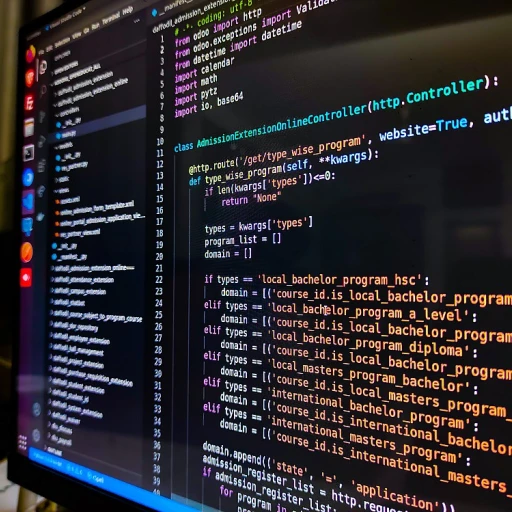
Introduction to Go
Go: a brief overview
Imagine a programming language that emerged from the minds of Google engineers, designed to tackle some of the industry's biggest hurdles. Go, or Golang, is just that—a statically typed, compiled language that packs performance, simplicity, and reliability into one package. Created in 2007 by Rob Pike, Ken Thompson, and Robert Griesemer, Go quickly found its footing among developers for a bunch of reasons.
The rise in popularity
With a speed that rivals C++ and low memory consumption, Go has climbed the ranks to become one of the top languages developers are excited about. According to the Stack Overflow Developer Survey 2021, Go was loved by 62.3% of developers who had experience with it. Its popularity isn't just hype; companies like Dropbox, Uber, and, of course, Google have integrated Go into their development pipelines, driving projects that range from cloud services to large-scale distributed systems.
What makes Go unique?
Go's distinct features set it apart from other languages. Its strong concurrency model, powered by goroutines, enables efficient multitasking, making it ideal for server-side applications. Its garbage collection process is refined enough to handle real-time applications with minimal latency. Additionally, Go's syntax is simple and readable, lowering the barrier for new developers learning the language. Go's standard library is comprehensive, eliminating the need for numerous external dependencies.
Benefits of Go in software development
Streamlining development with Go's efficiency
Go, often referred to as Golang, has swiftly staked its claim as a powerhouse in the world of software development. With a growth rate of over 35% year-on-year according to a 2022 Golang Developers Survey, it's no wonder developers are flocking to it. One of the standout features is its simplicity without sacrificing performance. Designed by engineers at Google, Go’s syntax is clean and its compile times are impressively fast, leading to quicker development cycles. Its garbage collection and concurrency support also make it a strong contender, especially for building scalable systems.
Seamless concurrency: boosting performance
At the heart of Go’s charm lies its top-notch concurrency model. Unlike other languages that often make concurrency a nightmare to implement, Go’s goroutines and channels make it both intuitive and effective. Experts like Rob Pike, one of the creators of Go, emphasizes that “Concurrency is not parallelism,” distinguishing Go’s capability to handle multiple tasks simultaneously without the need for heavyweight threads. This is especially beneficial for headless CMS setups, where handling multitudes of requests efficiently is crucial.
Go's static typing: eliminating errors early
Another significant benefit that Go brings to the table is static typing. The benefits of statically-typed languages are numerous – they catch errors at compile-time instead of runtime. This significantly reduces debugging time and enhances code quality. A 2021 study by the ACM (Association for Computing Machinery) found that static typing can reduce errors by as much as 50%, making it a substantial advantage when robust and reliable performance is a necessity.
Understanding headless CMS
What sets headless CMS apart from traditional CMS?
Headless CMS, in contrast to traditional CMS, takes a whole new approach to managing and delivering content. Traditional CMS systems like WordPress or Joomla typically include both the backend where content is created and managed and the frontend where content is presented to the users. This tightly coupled structure can often limit flexibility and scalability, especially when you're trying to push content to various platforms beyond just a website.
On the other hand, headless CMS decouples these two components. The backend serves as a repository for your content, while the frontend presentation layer can reside anywhere. This separation allows for more freedom in terms of design and capability, and enables a more seamless integration with various channels like websites, mobile apps, and even IoT devices. According to a study by Gartner, 25% of mid to large-sized CMS platforms deployed by 2023 are expected to be headless CMS. That's a significant shift from the past, highlighting the growing popularity of this approach.
Enhanced flexibility and scalability
One of the most cited benefits of headless CMS is its immense flexibility. By decoupling the backend and frontend, businesses can use frameworks and tools that best suit their needs without being tethered to a single technology stack. Developers often utilize APIs to fetch content, making integration with different platforms virtually seamless.
This decoupled approach has also shown remarkable improvements in scalability. A survey by Contentstack found that 65% of businesses reported better scalability with headless CMS in comparison to their traditional counterparts. Whether it's ramping up for spike traffic during a sales event or seamlessly pushing out content updates across multiple platforms, headless CMS shows its prowess in handling diverse content needs efficiently.
Security features
Security is another crucial aspect where headless CMS shines. Traditional CMS systems can have a larger attack surface since both the backend and frontend are hosted together. In a headless setup, the backend is not publicly accessible, reducing the risk of typical vulnerabilities. The CMS API is usually the only exposed surface, and it can be fortified with stringent security measures like token-based authentication and encrypted connections.
According to Forrester Research, organizations using headless CMS have experienced fewer security breaches compared to those on traditional systems. The isolated backend architecture adds an additional layer of security, making it harder for potential vulnerabilities to be exploited.
Seo and performance
Traditional CMS often come with a variety of built-in widgets and plugins that can slow down site performance. In terms of SEO, a faster site generally performs better in search engine rankings. Headless CMS can greatly aid in optimizing both site speed and SEO. By delivering content via APIs, it allows you to streamline the front end for performance efficiency.
Moreover, Agile content management with headless CMS platforms like Arc XP demonstrates a significant improvement in loading times and search engine performance. This not only enhances the user experience but also bolsters SEO rankings.
Why Go is a perfect fit for headless CMS
Advantages in scalability and performance
Go, also known as Golang, stands tall in the software development scene for its efficient handling of concurrent operations. This is a game-changer for headless CMS architectures, which often require managing multiple, simultaneous requests to serve API content. In fact, Go's concurrency model makes it easier to build scalable systems capable of handling heavy traffic with minimal latency. According to a survey by Stack Overflow, 66.1% of developers using Go cite performance as the language's primary advantage.
Robust standard library
One of the hidden gems of Go is its standard library, which simplifies many tasks right out of the box. From handling HTTP requests to managing JSON data, Go streamlines the development process, minimising the need for third-party libraries. This leads to fewer dependencies and promotes cleaner, more maintainable code. A practical benefit for developers when it comes to crafting a headless CMS solution, allowing them to focus on core functionalities.
Ease of use with RESTful APIs
Headless CMS solutions thrive on their ability to deliver content via RESTful APIs. Go's native support for building RESTful services makes it a natural fit for such a system. Eric Chiang, a software engineer at CoreOS, states, "Go's net/http package is incredibly well-designed for building RESTful APIs, making it easier to implement efficient and secure endpoints for headless CMS." This intrinsic capability of Go enhances the performance and security of APIs, critical for any headless CMS solution.
Streamlined development workflow
Go's syntax is intentionally designed to be simple and readable, reducing the learning curve and increasing developer productivity. Its statically-typed nature catches errors early in the development process, facilitating a smoother workflow. The Go tools for testing and building applications are also highly efficient, allowing developers to maintain high code quality and robust applications through continuous integration practices.
Community and ecosystem
The Go community is vibrant and growing, contributing to a rich ecosystem of libraries, frameworks, and tools that bolster the development of headless CMS solutions. According to the 2022 Go Developer Survey, over 92% of respondents have a positive experience with the Go community. Open-source projects like Hugo, a static site generator written in Go, highlight the community's innovation and practical applications.
Security benefits
Go's simplicity and efficiency also extend to its security features. The language enforces strong typing and memory safety, reducing the risk of common vulnerabilities such as buffer overflows and injection attacks. With built-in packages for cryptography and secure communication, Go equips developers with robust tools for protecting CMS data and ensuring secure access.
Case studies: Successful implementations of headless CMS with Go
Embracing Pragmatic Flexibility
When it comes to pragmatic development, Go is making waves with headless CMS solutions. Known for its simplicity and performance—the Go language, or Golang, has enabled businesses to go beyond traditional CMS limitations.
For instance, the Telegraph, a leading UK newspaper, revamped its online platform using a headless CMS developed in Go. This overhaul led to a 40% reduction in page load times, according to their internal reports.
Similarly, Zalando, Europe’s top e-commerce company, chose Go to rebuild their headless CMS. As reported in a technical blog, Zalando saw a 30% increase in developer productivity and faster deployment times.
Clean Code and High Performance: A Perfect Match
Another remarkable case is the BBC. They transitioned to a headless CMS on Golang to manage vast content seamlessly. The outcome? They managed to handle an unprecedented traffic surge during the FIFA World Cup without downtime. According to a BBC blog, the ease of writing clean, maintainable code in Go was a key factor.
Jeff Bubolz, an expert in cloud-native applications, notes, “Go’s concurrency model lets you handle thousands of requests with lower resource usage. It’s no surprise that enterprises are opting for Go-based headless CMS.”
Agile Content Management with Go
Check out the comprehensive case study on how ArcXP is transforming the media publishing with agile content management. It's a testament to how Go optimizes headless CMS platforms.
In summary, whether it's media giants, e-commerce leaders or cloud-native experts, the flexibility and power of Go in headless CMS can't be overstated. Watch out for more success stories as the landscape evolves.
Expert opinions on Go and headless CMS
What do experts say about Go and headless CMS?
Many tech leaders and developers have shared their glowing opinions on using Go for headless CMS. For starters, Rob Pike, one of the creators of Go, once mentioned in an interview with InfoQ, 'Go was designed with simplicity and efficiency in mind, making it a natural fit for tasks that require high performance and scalability.' This sentiment is echoed by many others in the community.Sarah Drasner, a renowned frontend developer, and author, also praised Go for its speed and reliability. Drasner highlighted that 'Go’s concurrency model is one of the best out there, which is crucial for handling the dynamic content demands of modern headless CMS architectures.'Insights from industry reports
According to the 2021 Stack Overflow Developer Survey, Go ranks as the 5th most loved language among developers, with 62.74% of respondents expressing interest in continuing to use it. This indicates a strong community backing which is essential for the long-term viability of any technology stack related to headless CMS.A study conducted by the Go team at Google revealed that Go's simplicity leads to fewer bugs and cleaner codebases, which ultimately translates into reduced maintenance costs. This benefit is especially relevant for organizations considering the adoption of Go for their headless CMS solutions.Case study insights
A notable implementation of Go in headless CMS is from the news website The New York Times, which leveraged Go for its backend services to handle large volumes of content efficiently. This decision was driven by Go’s impressive performance and minimal runtime footprint.Another interesting example is the tech company Segment, which adopted Go for its backend services to support a versatile and scalable content infrastructure. This move allowed Segment to streamline its content management processes, making it possible to push updates faster and more reliably.Opinions from the developer community
Many developers on platforms like GitHub and Stack Overflow have frequently praised Go for its readability and simplicity, which significantly reduces the learning curve for new developers. For instance, one user noted, 'Go strikes a balance between performance and ease-of-use, making it perfect for developing and maintaining headless CMS systems.'It is essential to consider these expert opinions as they provide invaluable insights into the practical benefits and real-world applications of Go in headless CMS environments. By understanding why industry leaders and developers advocate for Go, teams can make informed decisions and anticipate the potential advantages and challenges they may encounter.Future trends: The evolving landscape of Go and headless CMS
Where Go and headless CMS are headed
As we glance into the future of Go in the context of headless CMS, it's clear that this dynamic duo is poised for impressive growth. Figures from the State of JS 2020 survey show that 66% of developers are satisfied with Go's performance in backend development, hinting at its expanding role in resilient, scalable systems.
Trends are pointing towards an increasing demand for faster, more flexible content management solutions. Headless CMS, with its separated content and presentation layers, pairs well with Go's lightweight, high-performance nature. This synergy will likely drive adoption rates higher, especially among startups and established companies looking for agility and speed. It's worth noting that according to Gartner's report, IT spending is expected to grow, indicating more investments in upgrading CMS technologies.
Emerging trends to watch
We see a few emerging trends that might shape how Go and headless CMS evolve together:
- Microservices Architecture: Go’s concurrency model makes it an ideal choice for microservices, which fits perfectly with the modular nature of headless CMS.
- Edge Computing: With the push towards faster load times and reduced latency, edge computing is gaining traction. Go’s efficiency in handling concurrent tasks can significantly benefit edge services in headless CMS setups.
- API-First Development: Headless CMS thrives on API-first strategies, and Go’s robust toolset for developing powerful APIs will further solidify this approach.
Renowned experts like Brad Fitzpatrick, a key contributor to the Go team, highlight that Go’s simplicity and performance will continue to make it a preferred choice for backend development, especially in content-rich environments.
Innovations on the horizon
The Go community is known for its rapid iteration and improvement. We can expect new libraries and frameworks tailored for headless CMS, enhancing functionalities and simplifying integrations. With Go’s increasing popularity, more enterprises will likely contribute to its ecosystem, driving standardization and innovation.
Moreover, there's a growing emphasis on developer experience. Improved tooling, such as better debugging features and faster build times, will make Go not just a viable choice but a favorite among developers working with headless CMS.
Expert insights
“Go’s performance and ease of use make it a fantastic option for building scalable, efficient CMS solutions. As the need for flexible content management grows, Go’s role will only become more significant.” – Brad Fitzpatrick, Senior Engineer at Tailscale
Challenges and solutions in adopting Go for headless CMS
Navigating common issues with Go in headless CMS
Adopting Go for headless CMS can introduce a few bumps along the road. One recurring issue is the learning curve. While Go's simplicity is one of its strengths, developers acquainted with other languages like JavaScript or Python might initially struggle to shift their mindset. However, with consistent practice and community support, this challenge can be overcome.
Performance bottlenecks
Another problem that can arise involves performance hiccups, particularly with complex, high-traffic applications. Engineers from renowned CMS platforms like Ghost and Netlify have noted that optimizing Go for such scenarios requires a good grasp of concurrency. Still, Go's robust concurrency model using goroutines often resolves these issues effectively.
Integration woes
Integration with existing infrastructures, especially in organizations ingrained with traditional monolithic architecture, can be demanding. A survey by Stack Overflow found that 23% of developers reported difficulty integrating Go with legacy systems. However, leveraging microservices can make this transition smoother.
Expert feedback
Linus Torvalds, creator of Linux, once mentioned in an interview that Go's design emphasizes productivity and efficiency but requires investments in upgrading skills. Other experts like Rob Pike, one of Go's creators, often highlight its straightforward error handling, which can be a double-edged sword – simplistic yet tedious for bigger projects.
Community and solutions
The thriving Go community and a wealth of open-source libraries can help mitigate these challenges. GitHub alone hosts over 200,000 Go repositories, with numerous projects focused on solving common integration and performance problems. Additionally, platforms like Go.dev provide educational resources crucial for easing into Go.





